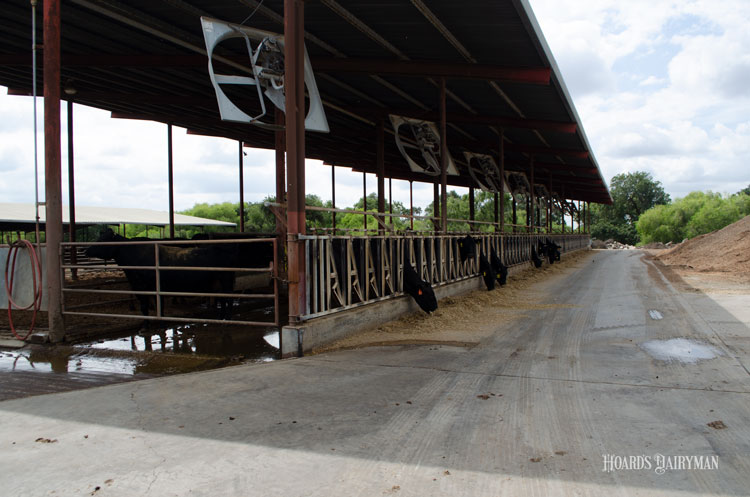
July has arrived in full force, and those summer temperatures have brought along heat stress. Fortunately, several strategies can help to alleviate those risks and limit their long-term effects.
“Many dairy producers experience an increase in their somatic cell count (SCC) in their milking herd during the summer and fall months,” Amber Yutzy said. “We often see a decrease in production due to cows standing or lying more where it is cooler and spending less time eating at the bunk.”
Heat stress causes spikes in the circulating levels of stress hormones that interfere with the immune system’s effect on bacteria. In turn, somatic cells are less able to protect against mastitis.
“Environmental mastitis and summer heat can cause an economic loss to your herd, but the effect of both can be reduced with some simple management practices,” she wrote.
The Penn State extension educator shared those tips in a recent Penn State extension article.
Keep bedded areas clean and dry. The summer heat and humidity provide better conditions for bacterial contamination of bedding.
Properly manage fans and sprinklers. One of the most important keys to keeping bedding dry and clean is arranging fan and sprinkler locations in such a way that stall beds are protected and cows aren’t overly wetted before lying down.
Fly control. The importance of this factor is its influence on the spread of mastitis. Fly control cuts off an important vector for disease transmission.
Milking procedure training. While this can’t prevent mastitis cases, early detection and appropriate treatment can keep them from spreading.
Provide fresh water. “Cows drink about 50% more water when the temperature is 80°F versus 40°F. They need water to cool themselves through increased respiration and perspiration,” Yutzy said.
“Not only does implementing better management practices around heat stress help to lower your farm’s incidence of mastitis, it will also increase production and overall farm profitability,” she concluded.








